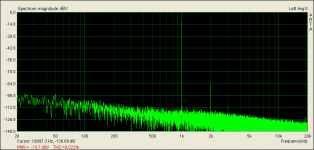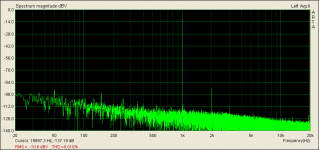Hi Salas
Well as expected once I put the lid on the box and warmed her up a little the results have changed a little with board 1 now at 7.71v and 2 at 7.75v.
I'll do a full re set to get some more accurate results.
hot box makes some difference.
I’ll spend the day with it tomorrow and report back.
Well as expected once I put the lid on the box and warmed her up a little the results have changed a little with board 1 now at 7.71v and 2 at 7.75v.
I'll do a full re set to get some more accurate results.
hot box makes some difference.
I’ll spend the day with it tomorrow and report back.
Hi Salas
Well as expected once I put the lid on the box and warmed her up a little the results have changed a little with board 1 now at 7.71v and 2 at 7.75v.
I'll do a full re set to get some more accurate results.
hot box makes some difference.
I’ll spend the day with it tomorrow and report back.
Looks good. Just set for 3.6v tp1-tp2 in hot condition.
Hi Salas,
since I have forgot (?) to order 2 pairs of k369s I will try to make the "folded" with just one pair (maybe Mike has another pair, I will check). Maybe the gain is just enough for my AT OC9.
Since he also provided me with 1.2k Resistors for R13: Can I use them with just one Jfet?
klaus
No you can't use 1.2k with just one FET. 56dB won't be dynamic on 0.4mV also. You better get a couple more FETs. If not same idss to the pair you now got, combine them between channels so the same total current runs through the 1k2 resistors. R2 & R3 can help equalize the current between each pair. If say 1mA different FETs, use next value up under the stronger one.
Shoom, you put electrolytic as the reg's termination for evaluation VS pp Zobel, or just to bias up while expecting some pp cap?
Hi Salas
Yes I have the nice Silmic that Mike Kindly sent in the kit as a get me going cap but I plan to try some others once I have the final build set.
I've given things a little further thought and am thinking that the mediocre R13 that I have in place at the moment is letting the side down a little.
I have a mouser order about to go off so I’m going to be adding a pair of CCF02 to the list. I'm also thinking of changing R2/3 to 0.1% Dale RN65E if you have no objections to that (I have PRP at the moment but would like to nail things down a little further between channels).
So
Give me a little time to have those components in hand and I’ll have some more meaningful results for you.
For now the most important things are
The board works and is nice to work on
The build guide is great
Mikes components are well thought out and all fit nicely.
If my implementation is a little out then I can work on things and learn in the process.
For me even after 20 years of building I’m still sweating a little at first switch on and relieved not to see the magic smoke.

All good
Good work guys
Best parts for ppm etc do help in this build but the main body of sonic signature lies in the electronic concept and layout of the board. So you can listen to it in any state of components and let it run in its electrolytics meanwhile. The load resistor(s) and R14 bridge one to Riaa will be the more audible for quality. Next important will be R4,14,5,6,10.
the electronic concept
Very true. Talking about that. The riaa compensation network, R14, R5/6, C1, C2, C3. I know little about those things but now I have been messing around in some riaas lately and finds both values and even concepts differ quite largely. Nothing strange about that. People have different philosophys in speaker filter construction to. Can you tell us a little about yours?
Ps. I know you worked it out mostly in the Itch. They hardly differ. What took you there?
Last edited:
The jfet one was before the itch. Its a juggling act between loading the input stage light enough without adding non necessary noise beyond that, shaping synergistically to the THD profile not forgetting Miller. In open loop everything is just so, no brute force to pin things down where you would just like to.
Interesting. THD-profile, does that mean you work towards the least distortion in the network? Is that some standardised thing in riaa-filters? Design is usually a compromise. Is it about finding a filter for most PUs or has the curve anything to do with finding a match in PUs? I digged most in old tube riaas.
Last edited:
The jfet one was before the itch.
Yes sorry. Itch latest version enherited from Jfet later version which transfered to folded right?
Interesting. THD-profile, does that mean you work towards the least distortion in the network? Is that some standardised thing in riaa-filters? Design is usually a compromise. Is it about finding a filter for most PUs or has the curve anything to do with finding a match in PUs? I digged most in old tube riaas.
Its esoteric in the voicing, not in filters theory. In open loop you won't beat the THD down to nothing, so you better subtly shape the EQ helping the overall tone. Expect something like this attached chart 1 for the average 63dB FSP build at nominal input level for instance. 6dB (0.01%) better is possible through stronger sweet spot cancellation and I get it even channel matched but only trough curve matching in jfets and R8 trimming. But not that audible as the trend remains the same and the cart has more THD anyway.
Attachments
Yes sorry. Itch latest version enherited from Jfet later version which transfered to folded right?
Not really for overall design, mostly in the passive filter.
Not really for overall design, mostly in the passive filter.
Yes I am just talking about the compensation network. Other stuff, amplification stages etc, I am a little familiar with.
Yes I am just talking about the compensation network. Other stuff, amplification stages etc, I am a little familiar with.
Aha. So RIIAs usually have global feedback? None of the ones I found had.
Gah. Quoted wrong text. The one above was ment. Darn iphone (darn beer)
Last edited:
- Home
- Source & Line
- Analogue Source
- Simplistic NJFET RIAA

